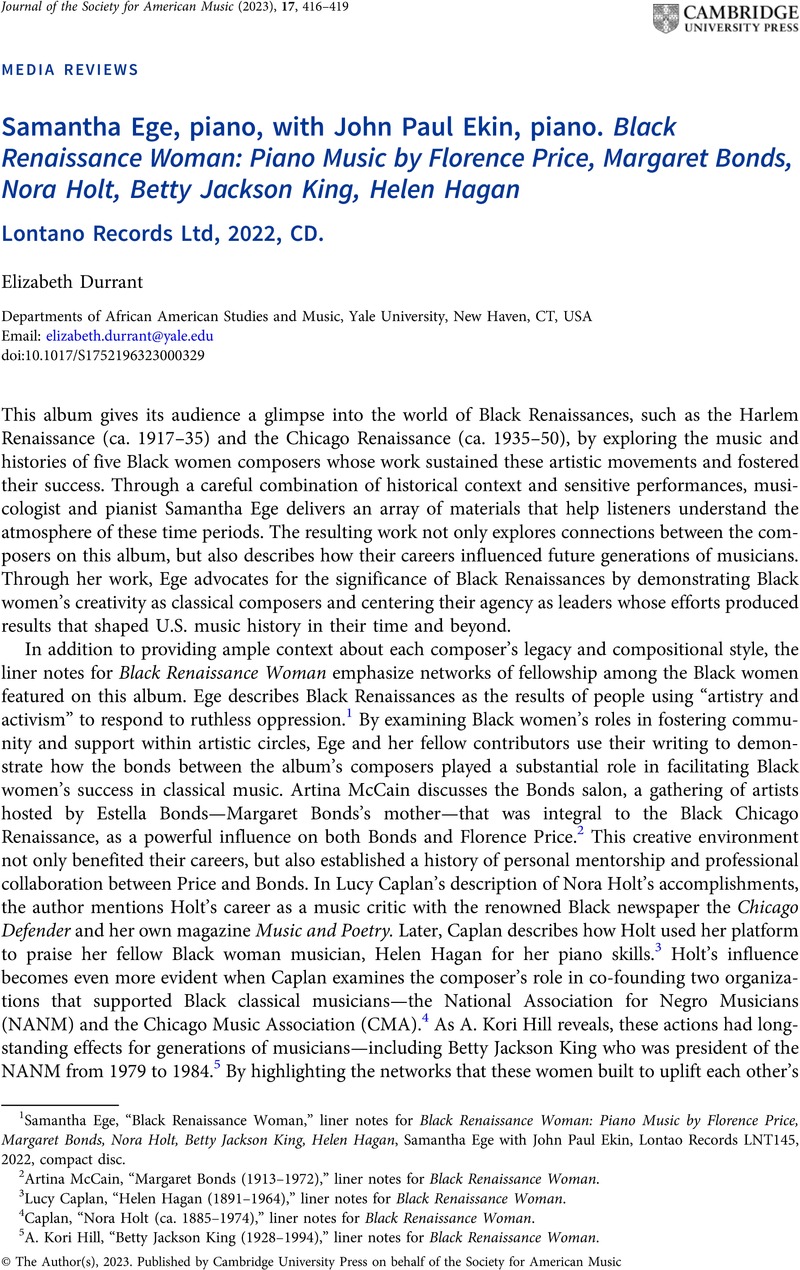No CrossRef data available.
Published online by Cambridge University Press: 16 November 2023

1 Samantha Ege, “Black Renaissance Woman,” liner notes for Black Renaissance Woman: Piano Music by Florence Price, Margaret Bonds, Nora Holt, Betty Jackson King, Helen Hagan, Samantha Ege with John Paul Ekin, Lontao Records LNT145, 2022, compact disc.
2 Artina McCain, “Margaret Bonds (1913–1972),” liner notes for Black Renaissance Woman.
3 Lucy Caplan, “Helen Hagan (1891–1964),” liner notes for Black Renaissance Woman.
4 Caplan, “Nora Holt (ca. 1885–1974),” liner notes for Black Renaissance Woman.
5 A. Kori Hill, “Betty Jackson King (1928–1994),” liner notes for Black Renaissance Woman.
6 Ege, “Black Renaissance Woman.”
7 “2022 Grammys Award Show: Complete Winners & Nominations List,” Recording Academy Grammy Awards, April 3, 2022. https://www.grammy.com/news/2022-grammys-complete-winners-nominees-nominations-list.